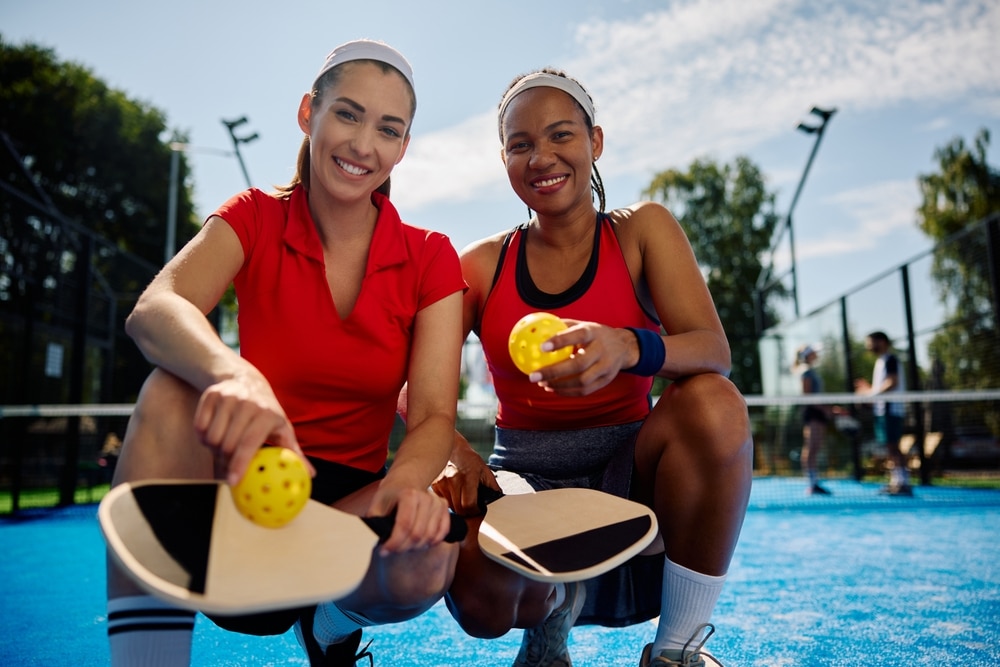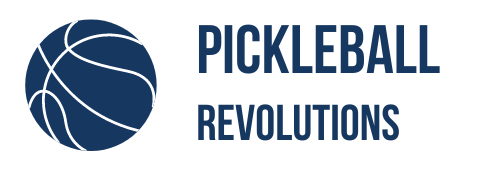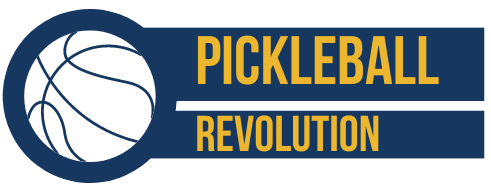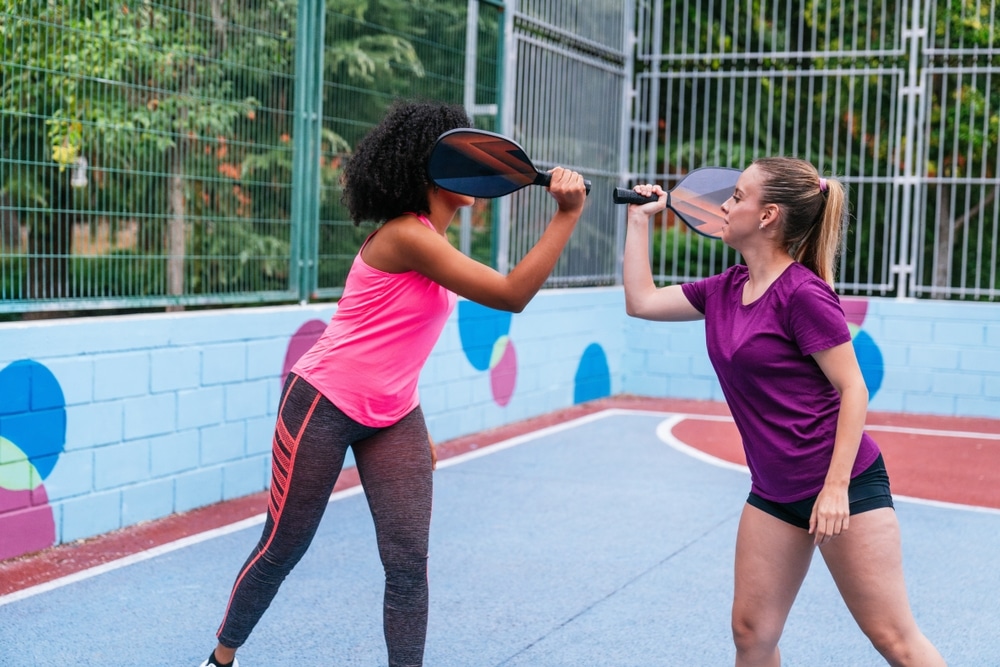Table of Contents
Pickleball isn’t just a game of quick reflexes and power shots—it’s a battle of strategy, teamwork, and precision. If you and your partner are tired of losing close matches or struggling against seasoned opponents, it’s time to elevate your game with proven doubles techniques that can turn the tide in your favor. From mastering the “third shot drop” to perfecting court positioning, we’re revealing the top 9 strategies that will give you a tactical advantage and help you dominate the court. Get ready to outplay, outsmart, and outscore—let’s dive in!

Pickleball Strategy Doubles
In doubles pickleball, strategy reigns supreme. Success depends on seamless coordination, anticipating your partner’s moves, and refining advanced techniques. By focusing on serve returns, positioning, and exploiting opponents’ weaknesses, you can elevate your game.
Mastering skills like controlling the volley zone, executing precise drop shots, and dominating the middle will keep opponents on edge. Winning isn’t just about individual skill—it’s about teamwork, communication, and smart tactics. Now, step up your doubles game and unleash your full potential!
Rules of Pickleball Strategy Doubles
The doubles pickleball scoring system uses three numbers: the server number, the receiving team’s score, and the serving team’s score.
Every team member serves in shifts, with a new serving team following each side out.
One player from the initial serving team serves until a fault is made.
Basic Rules for Pickleball Strategy Doubles

- Collaboration and communication are essential.
- According to the USA pickleball rules, proper positioning is crucial for efficient court coverage.
- It’s critical to know when to launch an attack or defend.
- Net control is of utmost importance.
- Take advantage of your opponent’s weaknesses.
- To effectively cover the court, coordinate your pickleball movements.
9 Advanced Pickleball Doubles Strategy

Get to the kitchen line after returning the serve
Expert pickleball doubles players value quickly moving to the kitchen line following a serve return, a calculated move well-known for its potency. Players increase scoring opportunities by controlling the game’s pace, controlling the net, and forcing opponents into defensive plays by quickly positioning both teammates close to the non-volley zone.
Keep opponents pinned to the baseline
Keeping opponents pinned to the baseline in pickleball strategy doubles provides a tactical advantage. By forcing them back, you take control of the game’s tempo and placement. Because their options are limited, you and your buddy may control the point and command the NVZ line, ready to launch forceful attacks.
Hit Drop Shots for Pickleball Strategy Doubles
Learning the drop shot is essential in the pickleball doubles strategy. A well-placed drop shot causes opponents to reposition, giving you a chance to move forward and into the non-volley zone. Its practical benefits include:
- Forcing opponents to hit the ball upward.
- Allowing them to take control of the rally.
- Setting up forceful returns.
Opponents Feet
A basic strategy in pickleball doubles is to aim your shots at your opponent’s feet. This pickleball tactic seeks to force tough returns and raise your scoring chances by making the ball pop up and applying pressure to the opponent. Low-arcing, precise shots upset their equilibrium and control, giving you the upper hand.

Return the Serve deep
Returning the serve deep is a calculated strategy in pickleball doubles to exploit the double bounce rule and keep opponents pinned close to the baseline. It gives the serving team more time to get to the non-volley zone line by requiring a longer, more difficult return, which could lead to offensive opportunities.
Focus on Positioning
In the pickleball doubles strategy, experimenting with court location entails assessing each partner’s advantages and disadvantages, maximizing covering areas, and maximizing accurate shots. Players can increase their efficacy and create a more successful doubles partnership by strategically situating themselves depending on their strengths and coverage abilities.
3rd Shot Strategies
The third stroke in the pickleball doubles strategy offers critical chances to take the lead. Effective strategies include pushing the ball low to expose an opponent’s weak side or using a drop shot to the non-volley zone. Focusing on your opponent’s feet or poor backhands may make them uncomfortable and create the ideal environment for you to dominate the court and go forward.
Use Spin
Gaining control over spin gives you a strategic advantage in pickleball doubles. To surprise opponents, players use a variety of spins, including sidespin, backspin, and topspin, to alter the ball’s trajectory. Players can generate unpredictable bounces by deftly using spin, which makes it difficult for opponents to hit and successfully return shots, giving them an edge over rivals on the court.
Stacking
Pickleball doubles stacking is arranging players on the court to best utilize their advantages and protect their disadvantages. Teams can maximize their gameplay by putting weaker backhands on the forehand side and left-handed players on the opposite side of the court. This improves coordination and lets players take full advantage of their favorite shots.
Final Thoughts
Pickleball doubles is a blend of skill, strategy, and coordination. Success comes from exploiting weaknesses, mastering positioning, and executing precise shots. Every move is calculated—from drop shots to serve returns—keeping opponents off balance. Effective teams read the game, control the volley zone, and dictate pace. A solid strategy includes understanding court dynamics, outmaneuvering opponents, and playing as a unit. In the end, winning isn’t just about hitting the ball—it’s about outthinking and dominating as a team.




